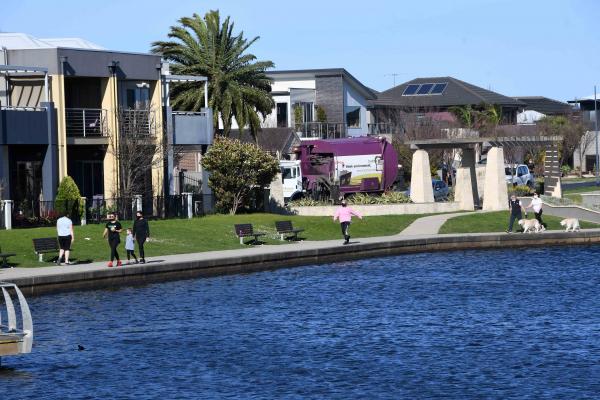
By Mitchell Clarke
A new study has found Pakenham, Officer and Beaconsfield residents have been “significantly less satisfied” with the Covid-19 lockdown, when compared with inner city suburbs.
Cross-faculty researchers from Monash University developed a tool to analyse Twitter posts and compare satisfaction and wellbeing across Melbourne suburbs over the two lockdown periods starting in March and July.
Those posts were mapped against the characteristics, amenity levels and urban form present in each area.
The study found Twitter users who lived in Cardinia Shire suburbs had a lower satisfaction level, compared with inner city residents, who had greater access to amenity and essential services.
Post-doctoral researcher Alexa Gower told the Gazette the research highlighted the relationship between sentiment and neighbourhood amenity.
She said it also showed how local access to parks and public facilities supported people’s wellbeing during lockdown.

“From those living in lower amenity suburbs like Pakenham, Beaconfield and Officer, we saw a lot more negative sentiment during lockdown,” she explained.
“Our research brought to light the challenges that some people face in working from home, particularly in neighbourhoods with poor walkability, access to parks and essential services.
“Commuting into the CBD previously enabled access to amenities that are unavailable in their neighbourhoods.”
Ms Gower said a drop in satisfaction levels was noticed when the five kilometre bubble was introduced.
“People have been forced to focus on their local environment during the pandemic and some areas like Pakenham have really struggled with that, especially when it comes to remote working,” she said.
“We’ve really found there was a lot of people expressing nostalgia for the time where they’d travel into the city for work. Working from home, for them, was a lot more difficult and presented challenges because their areas didn’t supplement what they considered to be essential services.”
While Twitter isn’t the most utilised social media channel for Cardinia Shire residents, especially compared to Facebook, Ms Gower said the application provided “amazing insights” from those locals who did use it.
“Social media, such as Twitter, can provide a window into how people are emotionally managing during the lockdown,” she said.
But more broadly and most importantly, Ms Gower said the study highlighted the importance of providing services and amenity across all areas of Melbourne.
“The Covid-19 lockdown experience highlights that if Melbourne is serious about achieving a city of 20-minute neighbourhoods and encouraging remote work, we need to improve access to everyday, local amenities in these neighbourhoods,” she said.
Monash University professor Carl Grodach added that outer communities didn’t have easy access to the essential services and amenities which helped to support healthy and liveable places.
“If remote working is here to stay, we will need to urgently turn our attention from the CBD to making the middle and outer-suburban neighbourhoods more accessible and liveable,” he said.







